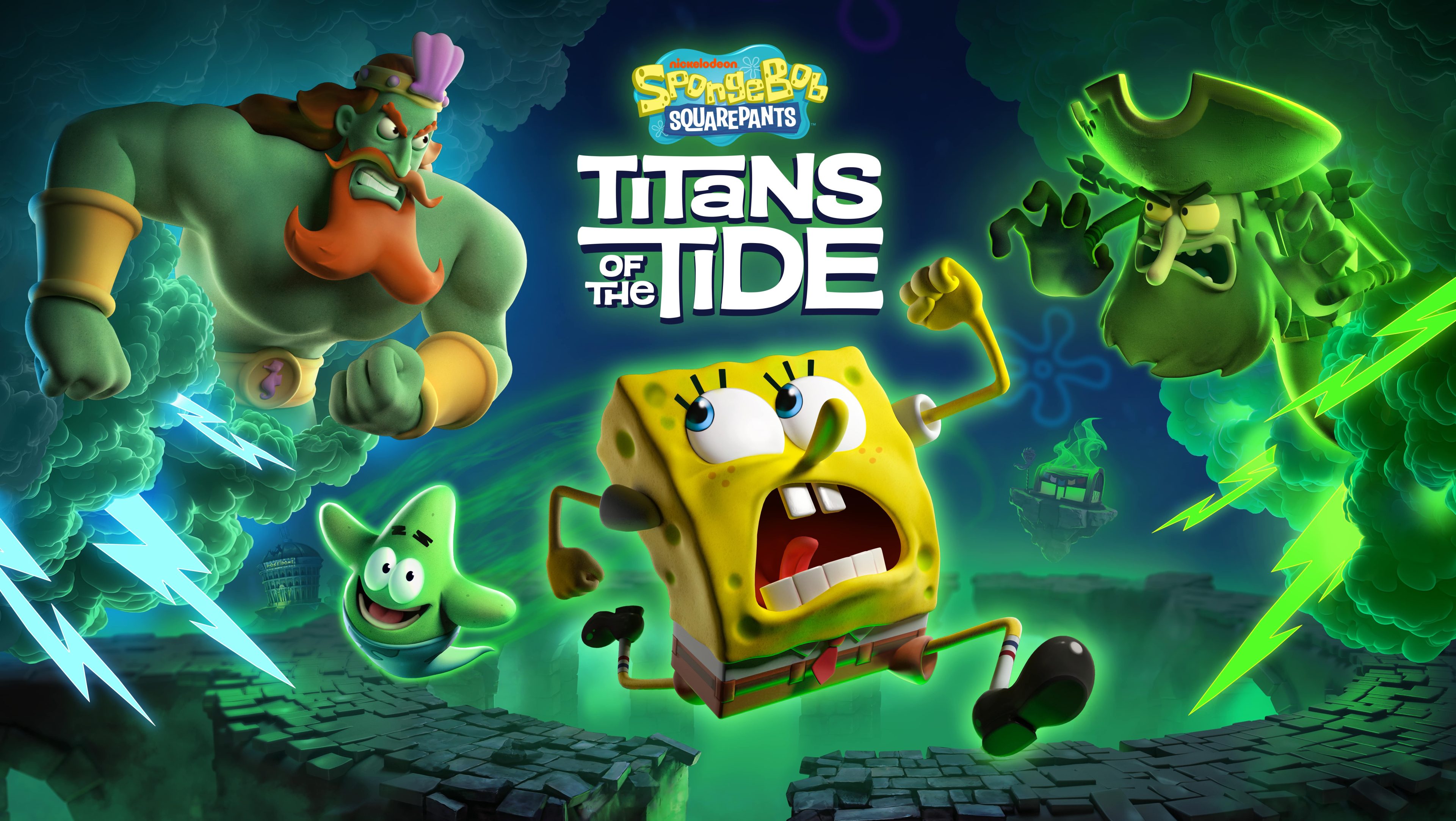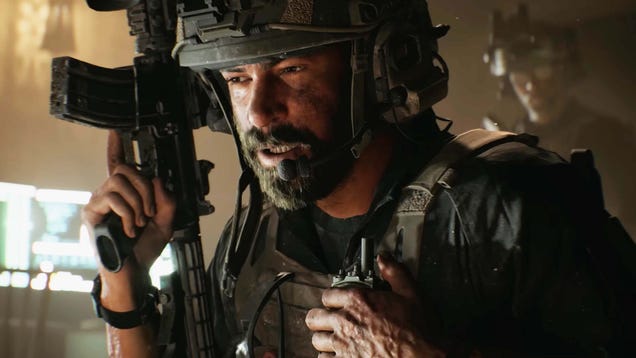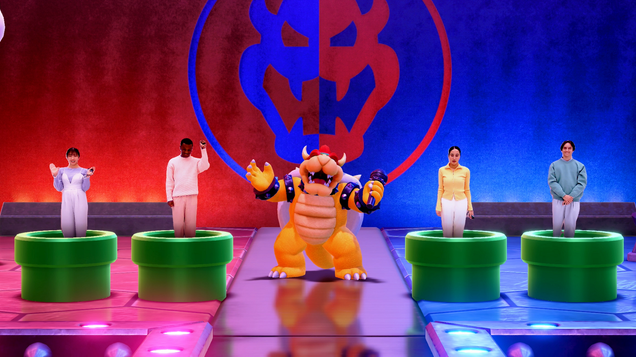From Rivals to Partners: What’s Up with the Google and OpenAI Cloud Deal?
Google and OpenAI struck a cloud computing deal in May, according to a Reuters report.
The deal surprised the industry as the two are seen as major AI rivals.
Signs of friction between OpenAI and Microsoft may have also fueled the move.
The partnership is a win-win.OpenAI gets more badly needed computing resources while Google profits from its B investment to boost its cloud computing capacity in 2025.
In a surprise move, Google and OpenAI inked a deal that will see the AI rivals partnering to address OpenAI’s growing cloud computing needs.
The story, reported by Reuters, cited anonymous sources saying that the deal had been discussed for months and finalized in May. Around this time, OpenAI has struggled to keep up with demand as its number of weekly active users and business users grew in Q1 2025. There’s also speculation of friction between OpenAI and its biggest investor Microsoft.
Why the Deal Surprised the Tech Industry
The rivalry between the two companies hardly needs an introduction. When OpenAI’s ChatGPT launched in November 2022, it posed a huge threat to Google that triggered a code red within the search giant and cloud services provider.
Since then, Google has launched Bardto compete with OpenAI head-on. However, it had to play catch up with OpenAI’s more advanced ChatGPT AI chatbot. This led to numerous issues with Bard, with critics referring to it as a half-baked product.
A post on X in February 2023 showed the Bard AI chatbot erroneously stating that the James Webb Telescope took the first picture of an exoplanet. It was, in fact, the European Southern Observatory’s Very Large Telescope that did this in 2004. Google’s parent company Alphabet lost B off its market value within 24 hours as a result.
Two years on, Gemini made significant strides in terms of accuracy, quoting sources, and depth of information, but is still prone to hallucinations from time to time. You can see examples of these posted on social media, like telling a user to make spicy spaghetti with gasoline or the AI thinking it’s still 2024.
And then there’s this gem:
With the entire industry shifting towards more AI integrations, Google went ahead and integrated its AI suite into Search via AI Overviews. It then doubled down on this integration with AI Mode, an experimental feature that lets you perform AI-powered searches by typing in a question, uploading a photo, or using your voice.
In the future, AI Mode from Google Search could be a viable competitor to ChatGPT—unless of course, Google decides to bin it along with many of its previous products. Given the scope of the investment, and Gemini’s significant improvement, we doubt AI + Search will be axed.
It’s a Win-Win for Google and OpenAI—Not So Much for Microsoft?
In the business world, money and the desire for expansion can break even the biggest rivalries. And the one between the two tech giants isn’t an exception.
Partly, it could be attributed to OpenAI’s relationship with Microsoft. Although the Redmond, Washington-based company has invested billions in OpenAI and has the resources to meet the latter’s cloud computing needs, their partnership hasn’t always been rosy.
Some would say it began when OpenAI CEO Sam Altman was briefly ousted in November 2023, which put a strain on the ‘best bromance in tech’ between him and Microsoft CEO Satya Nadella. Then last year, Microsoft added OpenAI to its list of competitors in the AI space before eventually losing its status as OpenAI’s exclusive cloud provider in January 2025.
If that wasn’t enough, there’s also the matter of the two companies’ goal of achieving artificial general intelligence. Defined as when OpenAI develops AI systems that generate B in profits, reaching AGI means Microsoft will lose access to the former’s technology. With the company behind ChatGPT expecting to triple its 2025 revenue to from B the previous year, this could happen sooner rather than later.
While OpenAI already has deals with Microsoft, Oracle, and CoreWeave to provide it with cloud services and access to infrastructure, it needs more and soon as the company has seen massive growth in the past few months.
In February, OpenAI announced that it had over 400M weekly active users, up from 300M in December 2024. Meanwhile, the number of its business users who use ChatGPT Enterprise, ChatGPT Team, and ChatGPT Edu products also jumped from 2M in February to 3M in March.
The good news is Google is more than ready to deliver. Its parent company has earmarked B towards its investments in AI this year, which includes boosting its cloud computing capacity.
In April, Google launched its 7th generation tensor processing unitcalled Ironwood, which has been designed specifically for inference. According to the company, the new TPU will help power AI models that will ‘proactively retrieve and generate data to collaboratively deliver insights and answers, not just data.’The deal with OpenAI can be seen as a vote of confidence in Google’s cloud computing capability that competes with the likes of Microsoft Azure and Amazon Web Services. It also expands Google’s vast client list that includes tech, gaming, entertainment, and retail companies, as well as organizations in the public sector.
As technology continues to evolve—from the return of 'dumbphones' to faster and sleeker computers—seasoned tech journalist, Cedric Solidon, continues to dedicate himself to writing stories that inform, empower, and connect with readers across all levels of digital literacy.
With 20 years of professional writing experience, this University of the Philippines Journalism graduate has carved out a niche as a trusted voice in tech media. Whether he's breaking down the latest advancements in cybersecurity or explaining how silicon-carbon batteries can extend your phone’s battery life, his writing remains rooted in clarity, curiosity, and utility.
Long before he was writing for Techreport, HP, Citrix, SAP, Globe Telecom, CyberGhost VPN, and ExpressVPN, Cedric's love for technology began at home courtesy of a Nintendo Family Computer and a stack of tech magazines.
Growing up, his days were often filled with sessions of Contra, Bomberman, Red Alert 2, and the criminally underrated Crusader: No Regret. But gaming wasn't his only gateway to tech.
He devoured every T3, PCMag, and PC Gamer issue he could get his hands on, often reading them cover to cover. It wasn’t long before he explored the early web in IRC chatrooms, online forums, and fledgling tech blogs, soaking in every byte of knowledge from the late '90s and early 2000s internet boom.
That fascination with tech didn’t just stick. It evolved into a full-blown calling.
After graduating with a degree in Journalism, he began his writing career at the dawn of Web 2.0. What started with small editorial roles and freelance gigs soon grew into a full-fledged career.
He has since collaborated with global tech leaders, lending his voice to content that bridges technical expertise with everyday usability. He’s also written annual reports for Globe Telecom and consumer-friendly guides for VPN companies like CyberGhost and ExpressVPN, empowering readers to understand the importance of digital privacy.
His versatility spans not just tech journalism but also technical writing. He once worked with a local tech company developing web and mobile apps for logistics firms, crafting documentation and communication materials that brought together user-friendliness with deep technical understanding. That experience sharpened his ability to break down dense, often jargon-heavy material into content that speaks clearly to both developers and decision-makers.
At the heart of his work lies a simple belief: technology should feel empowering, not intimidating. Even if the likes of smartphones and AI are now commonplace, he understands that there's still a knowledge gap, especially when it comes to hardware or the real-world benefits of new tools. His writing hopes to help close that gap.
Cedric’s writing style reflects that mission. It’s friendly without being fluffy and informative without being overwhelming. Whether writing for seasoned IT professionals or casual readers curious about the latest gadgets, he focuses on how a piece of technology can improve our lives, boost our productivity, or make our work more efficient. That human-first approach makes his content feel more like a conversation than a technical manual.
As his writing career progresses, his passion for tech journalism remains as strong as ever. With the growing need for accessible, responsible tech communication, he sees his role not just as a journalist but as a guide who helps readers navigate a digital world that’s often as confusing as it is exciting.
From reviewing the latest devices to unpacking global tech trends, Cedric isn’t just reporting on the future; he’s helping to write it.
View all articles by Cedric Solidon
Our editorial process
The Tech Report editorial policy is centered on providing helpful, accurate content that offers real value to our readers. We only work with experienced writers who have specific knowledge in the topics they cover, including latest developments in technology, online privacy, cryptocurrencies, software, and more. Our editorial policy ensures that each topic is researched and curated by our in-house editors. We maintain rigorous journalistic standards, and every article is 100% written by real authors.
#rivals #partners #whats #with #googleFrom Rivals to Partners: What’s Up with the Google and OpenAI Cloud Deal?
Google and OpenAI struck a cloud computing deal in May, according to a Reuters report.
The deal surprised the industry as the two are seen as major AI rivals.
Signs of friction between OpenAI and Microsoft may have also fueled the move.
The partnership is a win-win.OpenAI gets more badly needed computing resources while Google profits from its B investment to boost its cloud computing capacity in 2025.
In a surprise move, Google and OpenAI inked a deal that will see the AI rivals partnering to address OpenAI’s growing cloud computing needs.
The story, reported by Reuters, cited anonymous sources saying that the deal had been discussed for months and finalized in May. Around this time, OpenAI has struggled to keep up with demand as its number of weekly active users and business users grew in Q1 2025. There’s also speculation of friction between OpenAI and its biggest investor Microsoft.
Why the Deal Surprised the Tech Industry
The rivalry between the two companies hardly needs an introduction. When OpenAI’s ChatGPT launched in November 2022, it posed a huge threat to Google that triggered a code red within the search giant and cloud services provider.
Since then, Google has launched Bardto compete with OpenAI head-on. However, it had to play catch up with OpenAI’s more advanced ChatGPT AI chatbot. This led to numerous issues with Bard, with critics referring to it as a half-baked product.
A post on X in February 2023 showed the Bard AI chatbot erroneously stating that the James Webb Telescope took the first picture of an exoplanet. It was, in fact, the European Southern Observatory’s Very Large Telescope that did this in 2004. Google’s parent company Alphabet lost B off its market value within 24 hours as a result.
Two years on, Gemini made significant strides in terms of accuracy, quoting sources, and depth of information, but is still prone to hallucinations from time to time. You can see examples of these posted on social media, like telling a user to make spicy spaghetti with gasoline or the AI thinking it’s still 2024.
And then there’s this gem:
With the entire industry shifting towards more AI integrations, Google went ahead and integrated its AI suite into Search via AI Overviews. It then doubled down on this integration with AI Mode, an experimental feature that lets you perform AI-powered searches by typing in a question, uploading a photo, or using your voice.
In the future, AI Mode from Google Search could be a viable competitor to ChatGPT—unless of course, Google decides to bin it along with many of its previous products. Given the scope of the investment, and Gemini’s significant improvement, we doubt AI + Search will be axed.
It’s a Win-Win for Google and OpenAI—Not So Much for Microsoft?
In the business world, money and the desire for expansion can break even the biggest rivalries. And the one between the two tech giants isn’t an exception.
Partly, it could be attributed to OpenAI’s relationship with Microsoft. Although the Redmond, Washington-based company has invested billions in OpenAI and has the resources to meet the latter’s cloud computing needs, their partnership hasn’t always been rosy.
Some would say it began when OpenAI CEO Sam Altman was briefly ousted in November 2023, which put a strain on the ‘best bromance in tech’ between him and Microsoft CEO Satya Nadella. Then last year, Microsoft added OpenAI to its list of competitors in the AI space before eventually losing its status as OpenAI’s exclusive cloud provider in January 2025.
If that wasn’t enough, there’s also the matter of the two companies’ goal of achieving artificial general intelligence. Defined as when OpenAI develops AI systems that generate B in profits, reaching AGI means Microsoft will lose access to the former’s technology. With the company behind ChatGPT expecting to triple its 2025 revenue to from B the previous year, this could happen sooner rather than later.
While OpenAI already has deals with Microsoft, Oracle, and CoreWeave to provide it with cloud services and access to infrastructure, it needs more and soon as the company has seen massive growth in the past few months.
In February, OpenAI announced that it had over 400M weekly active users, up from 300M in December 2024. Meanwhile, the number of its business users who use ChatGPT Enterprise, ChatGPT Team, and ChatGPT Edu products also jumped from 2M in February to 3M in March.
The good news is Google is more than ready to deliver. Its parent company has earmarked B towards its investments in AI this year, which includes boosting its cloud computing capacity.
In April, Google launched its 7th generation tensor processing unitcalled Ironwood, which has been designed specifically for inference. According to the company, the new TPU will help power AI models that will ‘proactively retrieve and generate data to collaboratively deliver insights and answers, not just data.’The deal with OpenAI can be seen as a vote of confidence in Google’s cloud computing capability that competes with the likes of Microsoft Azure and Amazon Web Services. It also expands Google’s vast client list that includes tech, gaming, entertainment, and retail companies, as well as organizations in the public sector.
As technology continues to evolve—from the return of 'dumbphones' to faster and sleeker computers—seasoned tech journalist, Cedric Solidon, continues to dedicate himself to writing stories that inform, empower, and connect with readers across all levels of digital literacy.
With 20 years of professional writing experience, this University of the Philippines Journalism graduate has carved out a niche as a trusted voice in tech media. Whether he's breaking down the latest advancements in cybersecurity or explaining how silicon-carbon batteries can extend your phone’s battery life, his writing remains rooted in clarity, curiosity, and utility.
Long before he was writing for Techreport, HP, Citrix, SAP, Globe Telecom, CyberGhost VPN, and ExpressVPN, Cedric's love for technology began at home courtesy of a Nintendo Family Computer and a stack of tech magazines.
Growing up, his days were often filled with sessions of Contra, Bomberman, Red Alert 2, and the criminally underrated Crusader: No Regret. But gaming wasn't his only gateway to tech.
He devoured every T3, PCMag, and PC Gamer issue he could get his hands on, often reading them cover to cover. It wasn’t long before he explored the early web in IRC chatrooms, online forums, and fledgling tech blogs, soaking in every byte of knowledge from the late '90s and early 2000s internet boom.
That fascination with tech didn’t just stick. It evolved into a full-blown calling.
After graduating with a degree in Journalism, he began his writing career at the dawn of Web 2.0. What started with small editorial roles and freelance gigs soon grew into a full-fledged career.
He has since collaborated with global tech leaders, lending his voice to content that bridges technical expertise with everyday usability. He’s also written annual reports for Globe Telecom and consumer-friendly guides for VPN companies like CyberGhost and ExpressVPN, empowering readers to understand the importance of digital privacy.
His versatility spans not just tech journalism but also technical writing. He once worked with a local tech company developing web and mobile apps for logistics firms, crafting documentation and communication materials that brought together user-friendliness with deep technical understanding. That experience sharpened his ability to break down dense, often jargon-heavy material into content that speaks clearly to both developers and decision-makers.
At the heart of his work lies a simple belief: technology should feel empowering, not intimidating. Even if the likes of smartphones and AI are now commonplace, he understands that there's still a knowledge gap, especially when it comes to hardware or the real-world benefits of new tools. His writing hopes to help close that gap.
Cedric’s writing style reflects that mission. It’s friendly without being fluffy and informative without being overwhelming. Whether writing for seasoned IT professionals or casual readers curious about the latest gadgets, he focuses on how a piece of technology can improve our lives, boost our productivity, or make our work more efficient. That human-first approach makes his content feel more like a conversation than a technical manual.
As his writing career progresses, his passion for tech journalism remains as strong as ever. With the growing need for accessible, responsible tech communication, he sees his role not just as a journalist but as a guide who helps readers navigate a digital world that’s often as confusing as it is exciting.
From reviewing the latest devices to unpacking global tech trends, Cedric isn’t just reporting on the future; he’s helping to write it.
View all articles by Cedric Solidon
Our editorial process
The Tech Report editorial policy is centered on providing helpful, accurate content that offers real value to our readers. We only work with experienced writers who have specific knowledge in the topics they cover, including latest developments in technology, online privacy, cryptocurrencies, software, and more. Our editorial policy ensures that each topic is researched and curated by our in-house editors. We maintain rigorous journalistic standards, and every article is 100% written by real authors.
#rivals #partners #whats #with #google













